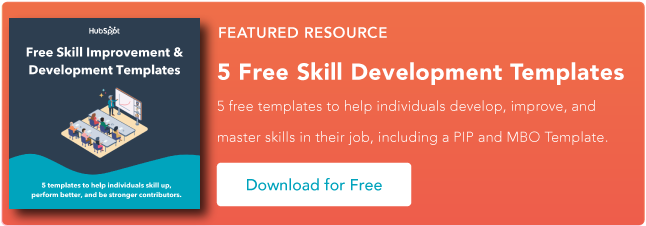In turn, you can’t do that until you get your prospect to tell you what’s wrong. And so on, and so forth …
So, communication is key. We wrote this guide to unpack why communication in sales is so important and explain 15 helpful skills to cultivate across your sales team.
What's the importance of communication in sales?
The root of sales success is the ability to gather and provide information in a way that makes your prospect want to do business with you. Your value proposition, your pricing, even your product’s features — none of that matters unless you’re able to get your prospects to talk to you and also listen to what you have to say.
That means you have to be incredibly attuned to your buyer and understand what they mean when they tell you — or don't tell you — something. It also means that you can't just reel off a list of benefits or reasons to work together.
You've got to understand how your prospects learn, what they care about, what communication style they prefer, and adapt your strategy accordingly.
So, before you immerse yourself in buyer personas, case studies, and marketing collateral, work on these skills to ensure that when you’re talking to a prospect, you’re sending the right message.
1. Pay full attention.
We’re all busier than ever before, and selling can be an especially pressure-filled career. So it’s understandable that during a client meeting, your mind could wander over to the demo you have to prepare for this afternoon, the prospecting you forgot to do, or the contract you’re waiting on to come in.
Just because it’s understandable doesn’t make it acceptable. Showing up to a call isn’t just about physically being on the other end of the line. You have to dedicate 100% of your attention to each call, otherwise you’ll miss details and make your prospect repeat things they’ve already told you. It’ll be obvious when you’re not paying attention, and that’s no way to treat buyers.
2. Practice active listening.
Not only do you have to listen, you have to listen actively, otherwise your conversation won’t really go anywhere.
“Too often, salespeople are waiting for their turn to talk or thinking about what to say next, instead of truly listening to the prospect,”Databox CEO Peter Caputa says.
Caputa uses the following four-step process:
- Truly listen to the prospect.
- Feed back the content and feeling of the prospect’s words.
- Confirm you heard the prospect correctly.
- Ask a relevant follow up question to further clarify your understanding of their situation.
3. Read body language and control your own.
The same sentence said by someone who’s smiling, looking directly into your eyes, and sitting up straight is received very differently when the speaker is looking away and slouching — even if they meant the same thing both times.
That’s because while we can say pretty much anything we want, our body language often reveals our true intentions or meaning. Great communicators know how to read others’ body language so they can anticipate the direction a conversation’s heading, and also make sure their own body language isn’t sending out signals they don’t mean to broadcast.
4. Master the nuances of voice tone.
Like body language, voice tone — your voice pitch, volume, speed, and even your word choice — affects how the words you’re actually saying are interpreted. And if you’re in inside sales, the only thing you have to make an impression is your voice.
Listen to how your prospect speaks, then mirror their speaking patterns when it makes sense. While you probably shouldn’t imitate every slang word or lingo they use, slow down if they speak slowly — or speed things up if they talk rapidly. Match your level of formality and familiarity to your prospect as well. The key is to meet buyers on their turf — and that means speaking in a way they’re comfortable with.
5. Be empathetic.
You don’t necessarily have to agree with everything your prospect is saying, but you should always at least try to see things from their point of view. And that means more than just saying, “Hmm, I see where you’re coming from.”
The best sales reps are able to connect with their prospects because they actually understand the things their buyers do at work every day and the challenges they face. Not only does being empathetic make you more likable, it also increases your chances of closing a deal. When you can draw on your knowledge of your prospects’ actual day-to-day, you’re better equipped to understand what they care about, which makes it more likely you’ll be able to help them.
6. Understand what’s not being said.
Prospects sometimes don’t tell the whole truth. And that’s okay, as long as you know how to spot when it’s happening. Is your prospect just evaluating your company because his boss told him to present three options? Is your prospect sold, but her manager, the economic buyer, isn’t? These are crucial things to know, and you can’t suss them out until you learn to read between the lines.
7. Speak in specifics.
Great communicators are not persuasive because they speak in dramatic, sweeping rhetoric. They’re able to convince people because they can point to specific examples or anecdotes that support the point they’re trying to make — and in the case of salespeople, because they can demonstrate exactly how a product or feature will help their buyer.
Be as specific as you can. And if you can throw in a catchy sound bite or two, by all means do it. Just don’t rely on quippy phrases to get a deal to the finish line.
8. Be a subject matter expert.
Of course, you can’t be specific if you don’t have any idea what you’re talking about. If you sell to a specific industry, you should know that industries’ concerns, behaviors, and buying patterns down pat. If you sell to multiple industries, know your value prop as it relates to each cold and use customer references as backup.
Prospects will never trust you if it doesn’t seem like you really understand your (or their) business, so become an expert in your relevant field.
9. Know what you don’t know.
But being an expert doesn’t mean you know everything. Unless you’ve shadowed your buyer, you don’t know exactly what they do or every nuance of their business. So don’t act like you do. You should know enough to sketch out the outlines of their situation on your own, but you’ll always have to rely on your prospects to fill in the little details.
Be aware of the gaps in your knowledge, then ask your prospect to help fill them in. They’ll appreciate your honesty about what you don’t know, and you’ll avoid losing deals because of false assumptions.
10. Be genuinely curious.
The key to sales is asking good questions. And if you’re not actually curious about your prospect’s situation, it’ll be all too easy to slip into your elevator pitch before you’ve established whether any part of it is relevant to your buyer. Great communicators are naturally curious about their conversational counterparts, and that’s especially crucial in sales — ask questions first, then answer them later.
11. Assume good intent.
Sometimes, prospects leave out important deals that can change the trajectory of a deal. Sometimes, they make a commitment before they've gotten approval from the necessary stakeholders. Sometimes, they lie on purpose.
All of the above situations are frustrating — and some are certainly cause for annoyance. But it's often difficult to distinguish between situations where a buyer misled you on purpose and one where they made a genuine error. Jumping to conclusions about your prospect's intent will color the rest of your interactions in a negative light. Always assume good intent so you're not subconsciously treating your prospects with hostility.
12. Always be honest.
Just because you're assuming good intent doesn't mean your prospect will, so always be upfront about the questions you can answer, the questions you can't, and the questions with answers your prospect might not necessarily like.
Your prospects won't be forthright about their goals and areas for improvement unless they trust you. That means always being upfront when you don't know something so they believe what you're saying when youdo know the answer.
13. Don't make assumptions.
if you've been in the same sales job for a while, you can easily fall into a routine. But just because the first 100 prospects that fit a certain profile had the same problems and processes doesn't mean the 101st will.
Unless you have independently verified a piece of information or your prospect has said the words to you, never make an assumption about their situation. While it only takes a few seconds to ask a follow-up question, making a prospect feel ignored and forcing them to interrupt you to correct an assumption is a negative ripple effect that can last forever.
14. Be persistent, not pestering.
There's a fine line between persistence and pestering, and it's crucial for salespeople to understand it. Continuing to call and email your prospect without knowing why they're not responding is counterproductive and can only serve to annoy and alienate them.
If you haven't received a response to a follow-up message, try a different approach. Instead of forwarding the same email to your prospect, start fresh with a new headline and an easier call to action. Once you re-engage them, steer the conversation back to business.
15. Be comfortable with silence.
Sales veteran Jeff Hoffman says most salespeople are too uncomfortable with silence. When they ask a question and the prospect gets quiet, most reps immediately try to fill that silence by asking a follow-up question or clarifying their ask.
Hoffman recommends pausing for around three three-to-five seconds before speaking. That way, you're not interrupting an important thought your prospect might be having, and you're setting the precedent that silence is welcome in your conversations.
Communication = Sales Success
Sales communication skills are by far the most important weapon in a salesperson's arsenal. Make sure to keep yours sharp and ready to use.
Editor's note: This post was originally published in June 2018 and has been updated for comprehensiveness.
Sales Communication





![Active Listening Techniques To Use On Your Next Sales Call [+ Examples]](https://53.fs1.hubspotusercontent-na1.net/hubfs/53/active-listening-1-20250218-4164086.webp)
![How to Reply to a Sales Rejection Email From a Client [+ Templates]](https://53.fs1.hubspotusercontent-na1.net/hubfs/53/timing-objection-responses-1.jpg)




%20(1).png)

